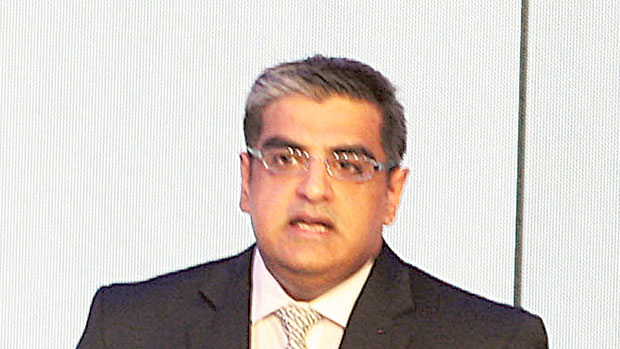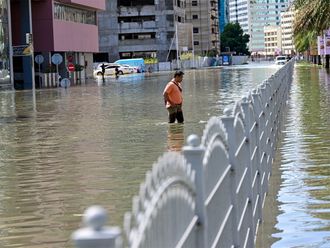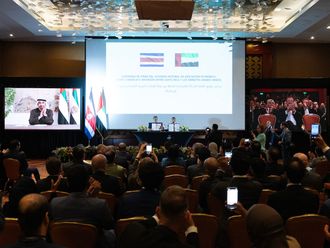
Abu Dhabi: The consumer media and entertainment market in the Middle East and North Africa region is expected to grow at a rapid pace of about seven per cent during the next five years, especially as Arab youth become bigger consumers and producers of digital and social media, delegates heard at a conference in the capital today (November 18).
The change will be brought about as media consumption patterns evolve in the region towards more paid local content, and as the high level of mobile penetration in the biggest economies like Saudi Arabia, Egypt and UAE pushes for more media to be made available on smartphones, a high-level industry expert said.
“To encourage and sustain this change however, and to ensure that future generations benefit from the growing media industry, policymakers and companies need to equip youth with the skills required to become a vital part of this sector. In addition, there is a need for initiatives that encourage international conglomerates to locate and develop talent in the region,” Jayant Bhargava, partner at international strategy and analyst firm, Strategy&, told Gulf News.
He was speaking on the sidelines of the Abu Dhabi Media Summit 2014, which saw industry experts, government officials and media executives meet to discuss trends and challenges in the sector. Speakers delved into the transformative role of various media forms, as well as challenges in financing and distribution.
Bhargava presented a study conducted by Strategy& and Abu Dhabi media zone authority, twofour54. One of its key findings is that media consumption of youth is growing, and that this population is also actively engaged now in the media generation process. Young people want quality content, and if they don’t find it, they are willing to produce it, Bhargava explained.
The study also highlighted a growing propensity by consumers in the region to source paid content.
“The region currently has the fastest growing consumer spending per capital on media, whether this is in the form of gaming, paid TV, mobile applications or premium television content. So even though consumers in the region have long been used to getting content free, they do have the disposable income and willingness to pay for quality media,” the expert said.
For example, the project discovered that youth in the region pay and average of $20 (Dh73.5) each month for paid gaming applications. Paid video content consumption is also expected to increase by 10 per cent annually.
In addition, the high penetration of mobile devices should also be an impetus for media outlets to develop content of many forms simultaneously. This is because each media type has varying purposes, and caters to different consumers.
“For example, we know that news content generation is very important, especially as even young readers consume it. But media producers cannot focus on just developing print media while ignoring social and smartphone media. Today, the journey of content starts with social and online forms, and is further solidified in print forms. Moreover, as young consumers grow up, they are likely to feel the need for professional, verified content,” Bhargava said.
The expert recommended that there be more educational programmes to help youth generate content, and to switch careers into the media industry.
“We know, for instance, that there are game developers locating in the region, especially the UAE and Jordan. But are there degrees that help students to learn gaming-related coding? Or if you are already a programmer and you want to switch from a tech firm to a game developer, can you get the required training?” he said.
In addition, conferences like the ongoing Media Summit also go a long way into creating international interest in the region as a media hub, Bhargava added.












